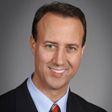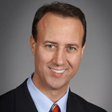Stop Paying the Hidden Fees in Your 401(k)
Your 401(k) may be bleeding internally. Learn how to rescue your retirement portfolio from unnecessary costs.

Quit worrying about the recent volatility in the global capital markets. Your retirement portfolio may have a bigger problem. Yes, I know, we have been in a global bear market for stocks. The headlines are full of warnings, and retirement investors are nervous. I get that. I see it everyday in eyes of the retirement investors.
But believe me, the recent stock market gyrations are most likely the least of your retirement portfolio's problems. Your 401(k) portfolio may be bleeding cash internally, and you may not even know it.
401(k) Anatomy 101
To grasp what I mean by internal bleeding within your 401(k) portfolio, you must first understand how 401(k) plans are constructed. In general, 401(k) plans have two basic operational components: investment options and recordkeeping or administration.
From just $107.88 $24.99 for Kiplinger Personal Finance
Become a smarter, better informed investor. Subscribe from just $107.88 $24.99, plus get up to 4 Special Issues

Sign up for Kiplinger’s Free Newsletters
Profit and prosper with the best of expert advice on investing, taxes, retirement, personal finance and more - straight to your e-mail.
Profit and prosper with the best of expert advice - straight to your e-mail.
Each component has a distinct and important role to play in order to keep your 401(k) plan humming along. And it stands to reason that each component of your 401(k) plan should have a separate and distinct fee commensurate with the type of service being offered, right? Wrong.
Hidden in Plain Sight
Hidden fees in 401(k) plans have been written about extensively over the past few years. And numerous lawsuits have been filed against 401(k) plan sponsors over excessive fees within their plans. In 2012, the Department of Labor issued rules mandating the disclosure of all fees to 401(k) plan participants. However, the lawsuits and new disclosure rules have done very little to prevent the hidden fee practice known as revenue sharing.
Revenue sharing is basically legal kickbacks from mutual fund companies to retirement plan record keepers. Under most revenue sharing arrangements, mutual fund companies pay a percentage of the fund's expense ratio to retirement plan record keepers to cover administrative expenses. The problem is, if you have mutual funds in your 401(k) that pay revenue sharing, you are effectively paying an asset-based fee for your plan's recordkeeping and administration. And as 401(k)s go, it's never a good idea to pay an asset-based fee for non-investment management services.
You see, under a revenue sharing scheme, every time you make a contribution to your plan, the cost of sending out your quarterly statements goes up. That is akin to hiring a plumber to fix a leaky gasket, but paying him based on the amount of water that flows through the pipe. No one would think that's a good deal, except for the plumber!
A Silent Killer of Retirement Portfolios
The damage inflicted by revenue sharing on your retirement portfolio can be extensive over time. The more you invest, the more revenue sharing eats away at your savings. The amount of revenue sharing paid varies by mutual fund, but can be as high as 0.40% per year or more. And because revenue sharing is built in to the mutual fund's daily net asset value (NAV), you don't see it or feel it. It's insidious.
Here's an illustration: Let's say you have been a diligent saver and have a 401(k) balance of $250,000. If the funds you invested in kicked back revenue sharing in the amount of 0.40% per year, you're paying approximately $1,000 per year ($250,000 multiplied by 0.40%) for administrative services that should cost no more than about $100 per year. Additionally, it is likely that you are actually subsidizing your fellow employees with smaller balances in your company's 401(k) plan. Gee, did you even get a thank you note?
How to Stop the Bleeding
The good news is your 401(k)'s condition does not have to be terminal. There are potentially two things you can do right now to stop the hemorrhaging and keep more of your 401(k) balance from being siphoned away:
1. Use index funds.
Most index funds do not share revenue. But be careful, there are indeed expensive versions of index funds. If the S&P 500 index fund in your plan has an expense ratio of more than 0.05%, you're getting ripped off. Also, most 401(k) plans do not offer an extensive lineup of index funds needed to build a well-diversified portfolio.
2. Use a brokerage window.
If your plan offers a brokerage window, which is the ability to trade offerings of a brokerage house such as TD Ameritrade, Schwab or Fidelity through your 401(k), you likely have access to virtually unlimited investment options including low-cost, exchange traded funds (ETFs). And your 401(k) plan's brokerage window may even offer dozens of ETFs that can be bought with no trading commissions, depending on the sponsor. (We use a number of commission-free ETFs to build individual 401(k) portfolios via a brokerage window for our clients. We absolutely love them.)
You don't have to be a math whiz to see that over time, the compounding effect of asset-based revenue sharing can unnecessarily put your retirement portfolio in critical condition. If you have a 401(k) balance of $50,000 or more, act now before more of your hard-earned money bleeds out.
Ron is the founder and CEO of ONE Retirement, an independent advisory firm focused on managing clients' retirement assets.
Profit and prosper with the best of Kiplinger's advice on investing, taxes, retirement, personal finance and much more. Delivered daily. Enter your email in the box and click Sign Me Up.

Ron is the founder of ONE Retirement, a registered investment advisory firm based in Overland Park, Kansas managing over $150 million for retirement investors. Ron's experience in the investment management industry—over a quarter century—instills him with a drive to help people attain and sustain their dreams for retirement. He started ONE to provide high-quality and highly personalized retirement and financial planning services to businesses, individuals, and families across the country.
-
 I'm want to give my 3 grandkids $5K each for Christmas.
I'm want to give my 3 grandkids $5K each for Christmas.You're comfortably retired and want to give your grandkids a big Christmas check, but their parents are worried they might spend it all. We ask the pros for help.
-
 If You're Not Doing Roth Conversions, You Need to Read This
If You're Not Doing Roth Conversions, You Need to Read ThisRoth conversions and other Roth strategies can be complex, but don't dismiss these tax planning tools outright. They could really work for you and your heirs.
-
 Could Traditional Retirement Expectations Be Killing Us?
Could Traditional Retirement Expectations Be Killing Us?A retirement psychologist makes the case: A fulfilling retirement begins with a blueprint for living, rather than simply the accumulation of a large nest egg.
-
 I'm a Financial Planner: If You're Not Doing Roth Conversions, You Need to Read This
I'm a Financial Planner: If You're Not Doing Roth Conversions, You Need to Read ThisRoth conversions and other Roth strategies can be complex, but don't dismiss these tax planning tools outright. They could really work for you and your heirs.
-
 Could Traditional Retirement Expectations Be Killing Us? A Retirement Psychologist Makes the Case
Could Traditional Retirement Expectations Be Killing Us? A Retirement Psychologist Makes the CaseA retirement psychologist makes the case: A fulfilling retirement begins with a blueprint for living, rather than simply the accumulation of a large nest egg.
-
 I'm a Financial Adviser: This Is How You Can Adapt to Social Security Uncertainty
I'm a Financial Adviser: This Is How You Can Adapt to Social Security UncertaintyRather than letting the unknowns make you anxious, focus on building a flexible income strategy that can adapt to possible future Social Security changes.
-
 I'm a Financial Planner for Millionaires: Here's How to Give Your Kids Cash Gifts Without Triggering IRS Paperwork
I'm a Financial Planner for Millionaires: Here's How to Give Your Kids Cash Gifts Without Triggering IRS PaperworkMost people can gift large sums without paying tax or filing a return, especially by structuring gifts across two tax years or splitting gifts with a spouse.
-
 'Boomer Candy' Investments Might Seem Sweet, But They Can Have a Sour Aftertaste
'Boomer Candy' Investments Might Seem Sweet, But They Can Have a Sour AftertasteProducts such as index annuities, structured notes and buffered ETFs might seem appealing, but sometimes they can rob you of flexibility and trap your capital.
-
 Quick Question: Are You Planning for a 20-Year Retirement or a 30-Year Retirement?
Quick Question: Are You Planning for a 20-Year Retirement or a 30-Year Retirement?You probably should be planning for a much longer retirement than you are. To avoid running out of retirement savings, you really need to make a plan.
-
 Don't Get Caught by the Medicare Tax Torpedo: A Retirement Expert's Tips to Steer Clear
Don't Get Caught by the Medicare Tax Torpedo: A Retirement Expert's Tips to Steer ClearBetter beware, because if you go even $1 over an important income threshold, your Medicare premiums could rise exponentially due to IRMAA surcharges.
-
 I'm a Tax Attorney: These Are the Year-End Tax Moves You Can't Afford to Miss
I'm a Tax Attorney: These Are the Year-End Tax Moves You Can't Afford to MissDon't miss out on this prime time to maximize contributions to your retirement accounts, do Roth conversions and capture investment gains.